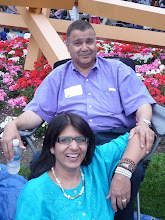At most of the family dinners that I have been invited to in the villages, the dinner plate is roughly about 7” in diameter compared to the larger American dinner plates, which start at about 8 1/2”. This size plate of plate is what we once used as a breakfast plate, later becoming a side plate accompanying the larger dinner plates. This size of plate has virtually disappeared in American homes for daily meals. The first few times I was invited out, it seemed at first, that the family eats out of a common dish, but after a few months I see that they actually take little bits of serving in their small plates. The celebration meal is therefore eaten over an extended period of time especially as no one item is taken all at once. Maybe for everyday meals they do eat out of the common dish, eliminating the need for the individual plates, much as we eat more informally with only the family present. I have had eaten from a communal dish in other cultures, which are truly eaten out of a common platter.
However, as a guest I not only spend time a lot of my free time with the family but with limited language skills of each other’s languages, food acts as a filler for conversation. There is erroneous assumption by my friends in the US that all PC volunteers lose weight. Here in this farming community, this is not so and I am out of shape and my dream about getting placement at a site close to either an indoor pool/gym or a fitness center, which I could use on a regular basis remains a dream as my site is a small municipality struggling to make itself attractive for its younger residents to stay.
Transportation by road and train is worth mentioning. Trains here are quite an experience – ranging from one was built more in style of the BritRail - seats with rigid high backs, facing each other, with two seats on each side of the aisle to the closed compartment with the corridor running along one side. Upkeep is also varied, more on the lack of upkeep, but as our village is connected by train to Skopje it is very convenient and we have travelled often by train. Most intercity buses look like regular Greyhound buses, though like trains the upkeep is varied. Even though intercity transport is entirely private, the bus stations are maintained by the central government. Rates are uniformly set. My trip to my future worksite was a combination of both forms of transport and with similar range of upkeep, including an intercity bus that had a city bus interior!
The volunteer community here is very cohesive and because we are in a small country, there are more opportunities to meet each other. During my first trip to Skopje for the welcome to the country get-together organized solely by the volunteers, the welcome started off with a speed dating concept – two concentric circles with the newer volunteers in the inner circle and the established volunteers outside, spending a minute or two with each other, after which the outer circle moved one spot over. I felt real warm and fuzzy, when many of the currently serving volunteers welcomed me to Macedonia, remembering me in spirit if not personally from a year ago. For so many years Halloween to me was spent decorating the house, carving pumpkins and setting out candy as well as making and costumes. I would wear my favorite black and white skeleton costume at the last minute! This year I was ‘Doc’, one of the seven dwarfs accompanying snowhite and had the added pleasure of purchasing and sewing the caps for the group at the get together organized by the training staff during the day and by the volunteers after hours!
Thus, not only is our scheduled time full and intense, the ‘after school’ activities as mentioned above, don’t allow my overloaded mind to fully comprehend and reflect on the many cultural experiences as and when they happen. Sometimes, I wonder if I will ever have the often talked about free time. I do want to write about the 'industry' that has grown around International Aid or Development. After learning some of the jargon in a workshop last month; the importance of separating the overarching goal of the NGO from its objectives: which should follow S.M.A.R.T. specific, measurable, achievable, realistic and timely guidelines to meet those goals, matrices, etc., I have observed that it is not only developing its own language, but is creating a set of expectations among both: the people who receive the aid, and the people who work in this field!
Sunday, November 8, 2009
Subscribe to:
Post Comments (Atom)





No comments:
Post a Comment